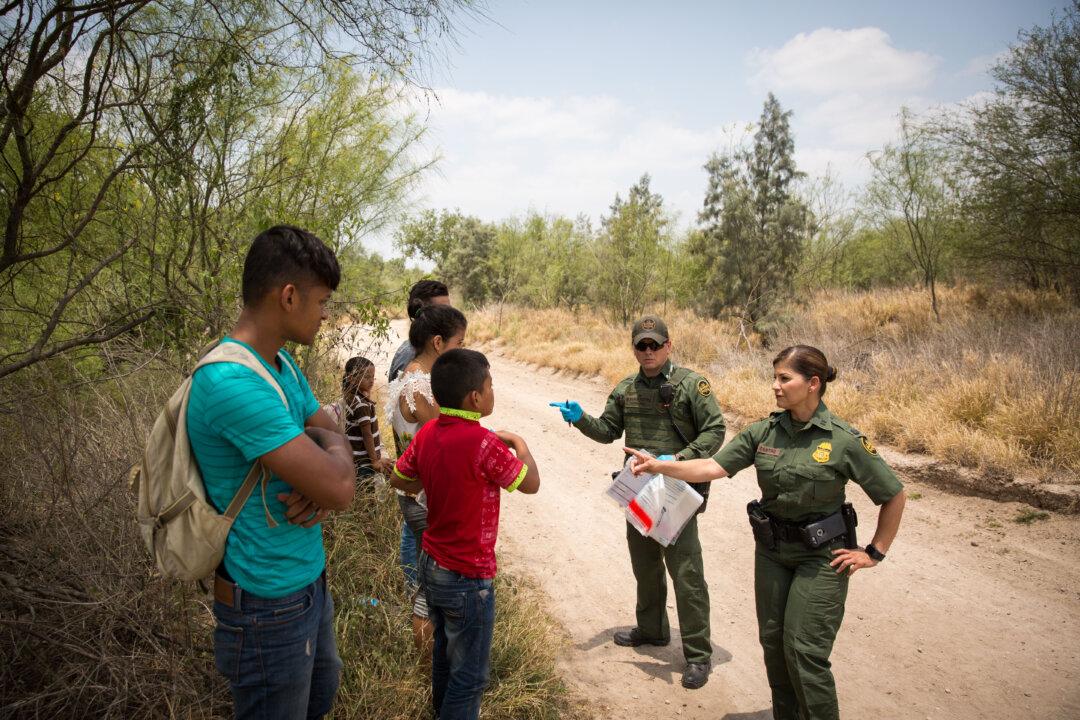MISSION, Texas—The Border Patrol truck brakes as three figures walk up the dirt road, clutching water bottles. A 15-year-old girl and her 11-year-old cousin from Honduras have just crossed the Rio Grande from Mexico with another 15-year-old boy from El Salvador. They are now known as unaccompanied minors—children under 18 who cross the border illegally without a parent or guardian.
We meet on the side of the road, and Border Patrol agents shepherd the children to a sliver of shade to wait for a van to pick them up. Border Patrol is obliged to transfer unaccompanied minors to the Office of Refugee Resettlement (ORR) within a maximum of 72 hours.





